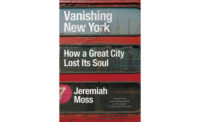How Medellín Got Its Groove Back

How Medellín Got Its Groove Back
The Orquideorama shelters the Botanic Garden’s orchid collection and hosts open-air events.
Photo © Sergio Gomez

How Medellín Got Its Groove Back
Children play at Felipe Uribe’s Parque de los Pies Descalzos (Barefoot Park).
Photo © Sergio Gomez

How Medellín Got Its Groove Back
Lorenzo Castro’s entry to the Botanic Garden.
Photo © Sergio Gomez

How Medellín Got Its Groove Back
Uribe’s EPM Library.
Photo © Sergio Gomez

How Medellín Got Its Groove Back
Giancarlo Mazzanti’s Biblioteca España.
Photo © Sergio Gomez

How Medellín Got Its Groove Back
Mazzanti and Daniel Bonilla’s International Convention Center.
Photo © Sergio Gomez


